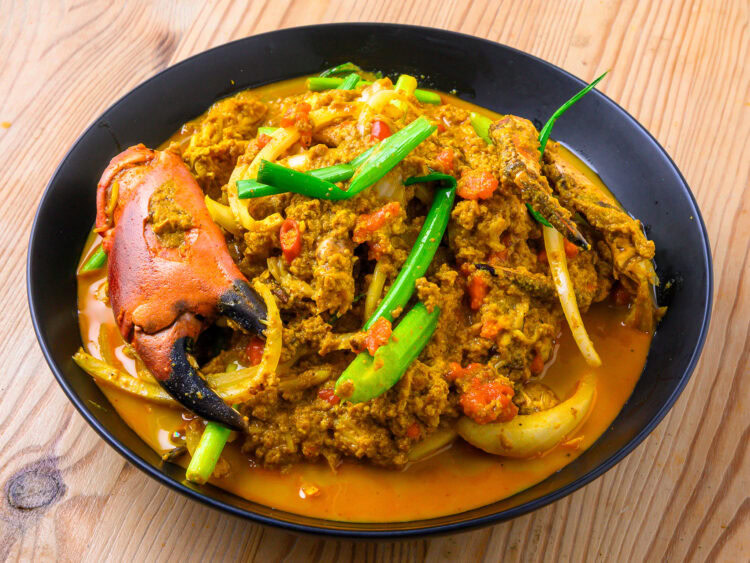A creamy, spicy Thai crab curry, blending roasted chili paste, milk powder, and crisp aromatics for a main dish packed with flavor.
Follow the scent of toasted curry mingling with briny steam drifting through Bangkok’s alleys at dusk. You’ll likely stop in front of a wok where a crab sizzles.
The cook pours in a rich, egg-yolk-colored paste that, in seconds, transforms into a glossy, saffron-hued sauce, coating the legs and claws. This is Pad Pong Karee: delicately aromatic rather than fiercely spicy, silky instead of soupy, made to envelop a mound of jasmine rice.
On a single plate, you taste three culinary influences: British curry powder inspired by India, wok technique from China, and the Thai knack for balancing sweet, salty, and spicy flavors.
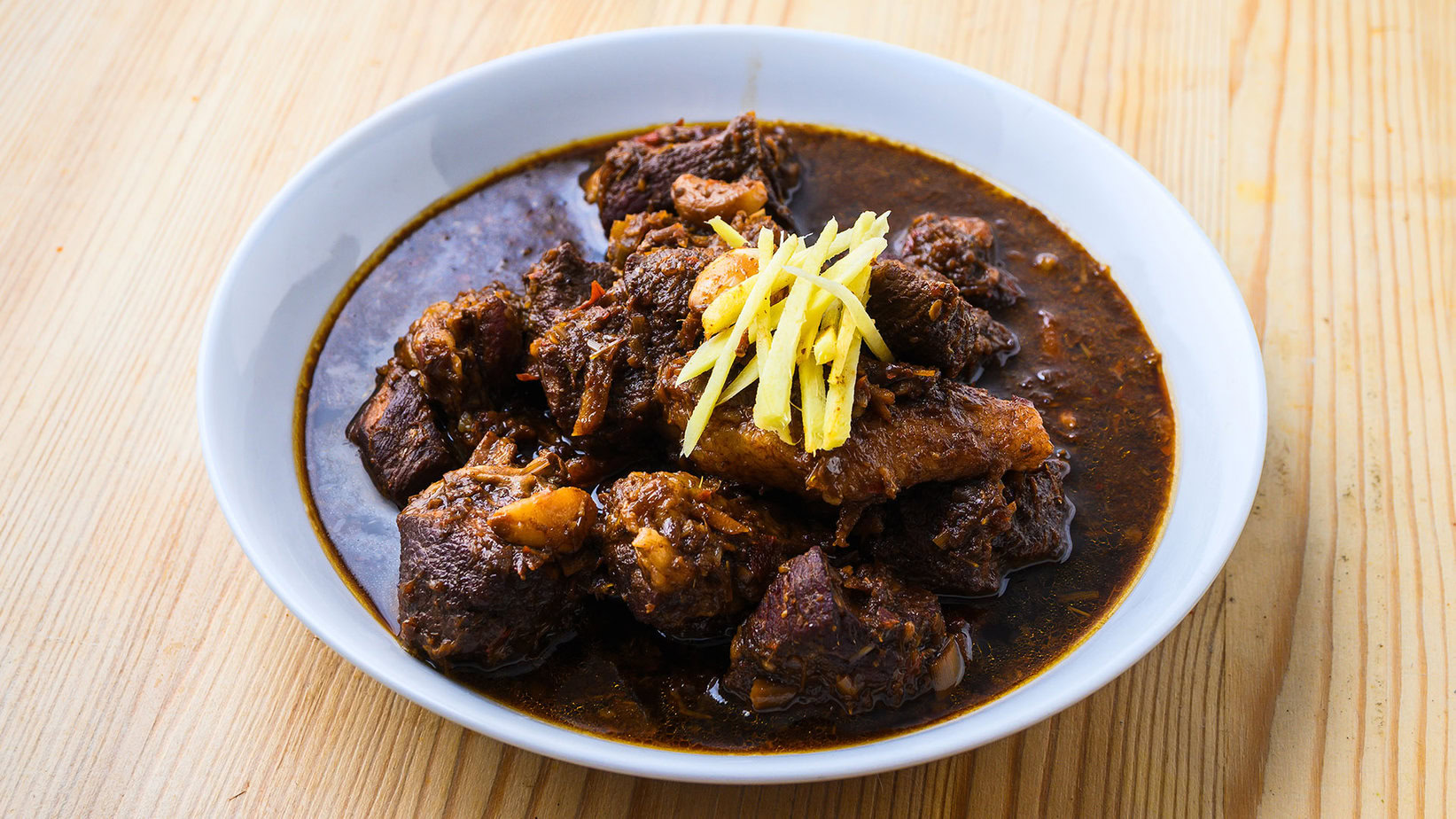
From the Docks of Shanghai to the Woks of Bangkok
Pad Pong Karee first appeared in the Chinese seafood restaurants of Bangkok in the mid-20th century, when imported English curry powder was gaining popularity. Some historians credit chefs from Shanghai or Penang for its creation.
Somboon Seafood, which opened in 1969 in Bangkok, later made it a house specialty—still famous in the capital today. The key ingredient was a tin of Madras-style yellow curry powder, made in Britain. This Anglo-Indian blend, rich in turmeric and coriander, traveled the trade routes of the Empire.
Sino-Thai cooks enhanced these spices with soy sauce and a spoonful of smoky nam prik pao, then thickened the sauce with egg, Cantonese-style. Legends mention Penang merchants, Shanghai dockside kitchens, even Indo-Portuguese curries from Goa; whichever story you prefer, the finished dish is unmistakably Thai in its balance and generosity.
What Makes a Pad Pong Karee “Authentic”?
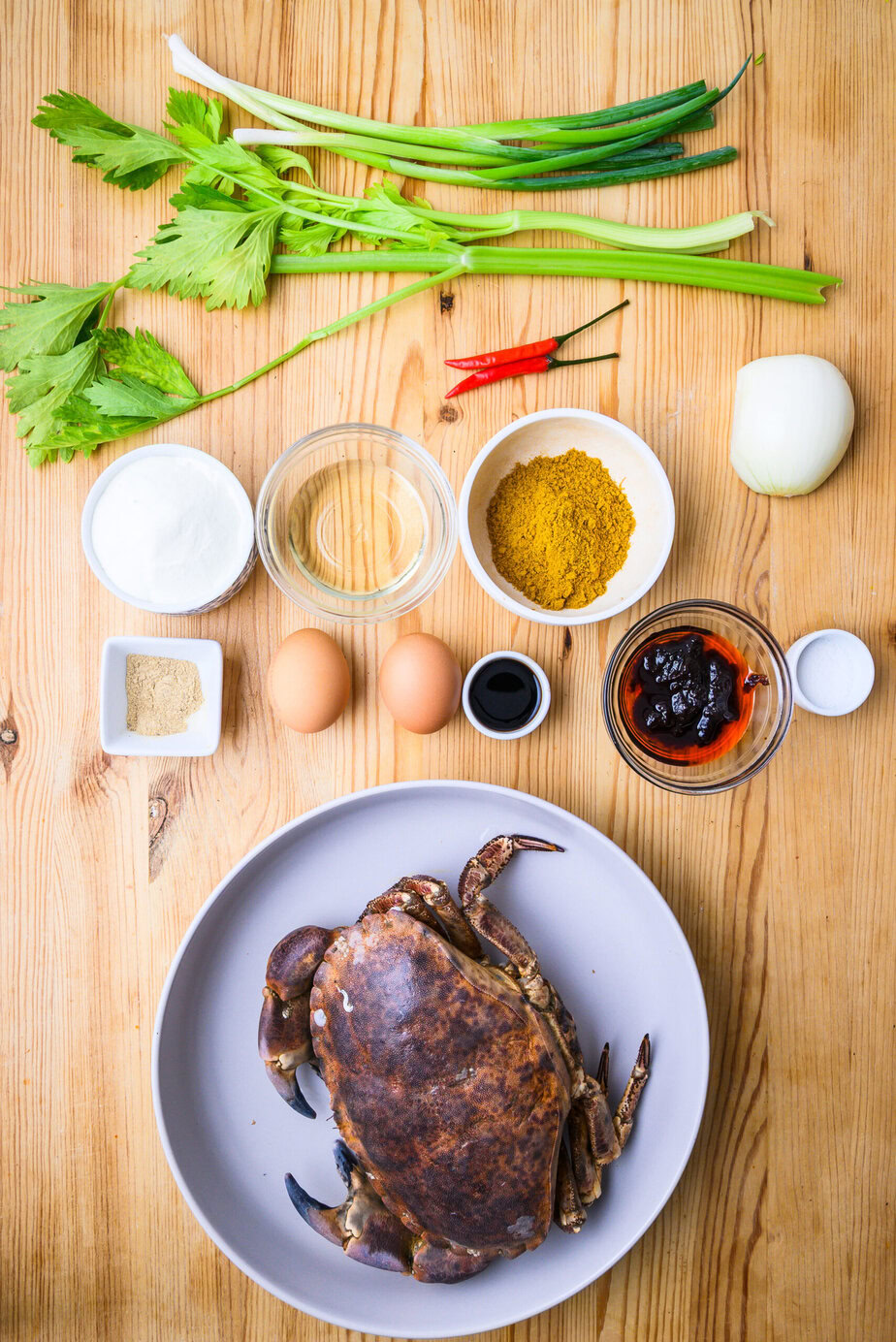
Authenticity is less about strict rules than about a recognizable character. The aroma should come from dry yellow curry powder (not a Thai yellow curry paste). In the creamy version, the sauce should reach a custard-like consistency that coats rather than drowns.
- Creamy version: curry powder quickly toasted in oil; a spoonful of nam prik pao and its red oil; beaten eggs loosened with evaporated milk or coconut milk; light soy sauce and oyster sauce; white pepper, slivers of onion, and a handful of Chinese celery for freshness.
- Classic protein: blue crab or mud crab, shell on; shrimp, mixed seafood, or chicken also work beautifully with the sauce.
- To avoid: adding basil or makrut lime, which overpower the curry’s flavors, or accidentally omitting egg and milk: there is a “dry” variant without egg, but it should be clearly stated as such.
The technique is gentler than most stir-fries: use medium heat, stir constantly, and be sure to turn off the heat while the sauce still ripples slightly; the residual warmth gives it a final gloss. When done right, every bit of shell comes out golden and lacquered, fragrant but never dry.
Regional Variations
Across Thailand, this curry—creamy or dry—varies by region. In Bangkok, you’ll find a pale sauce made with evaporated milk and just enough chili for a gentle tingle. Further south, cooks use rich coconut cream and add extra bird’s-eye chilies, turning the sauce more orange.
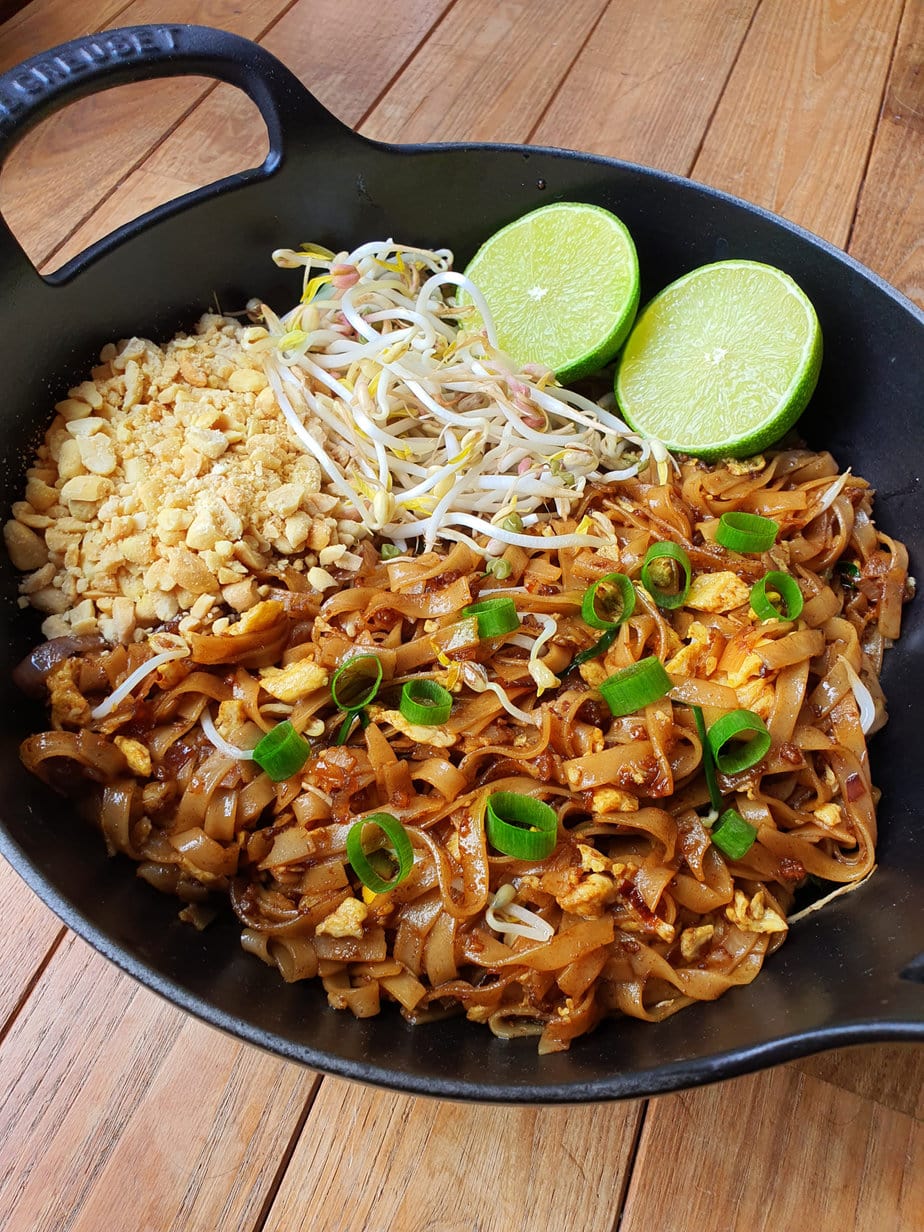
Soft-shell crab makes the whole crustacean edible, while busy weeknight cooks often reach for handy tubs of pre-picked crabmeat—convenient but less flavorful. Online forums debate whether soy sauce or fish sauce should dominate: the current consensus is that light soy sauce provides the salty base, while a splash of fish sauce adds depth without masking the Chinese notes.
How Thais Enjoy It
Pad Pong Karee is usually served in the center of a shared table. It’s surrounded by a plate of crisp water spinach stir-fry or a clear soup to refresh the palate.
Diners crack open the crimson-tinged shells, letting the rice soak up the golden sauce, while a small dish of prik nam pla—fish sauce with chopped chilies—waits for those who want an extra kick.
The visual sign of success is easy to spot: fine streaks of red chili oil run through a gentle yellow sauce, celery leaves stay bright green, and the aroma of spices drifts softly.
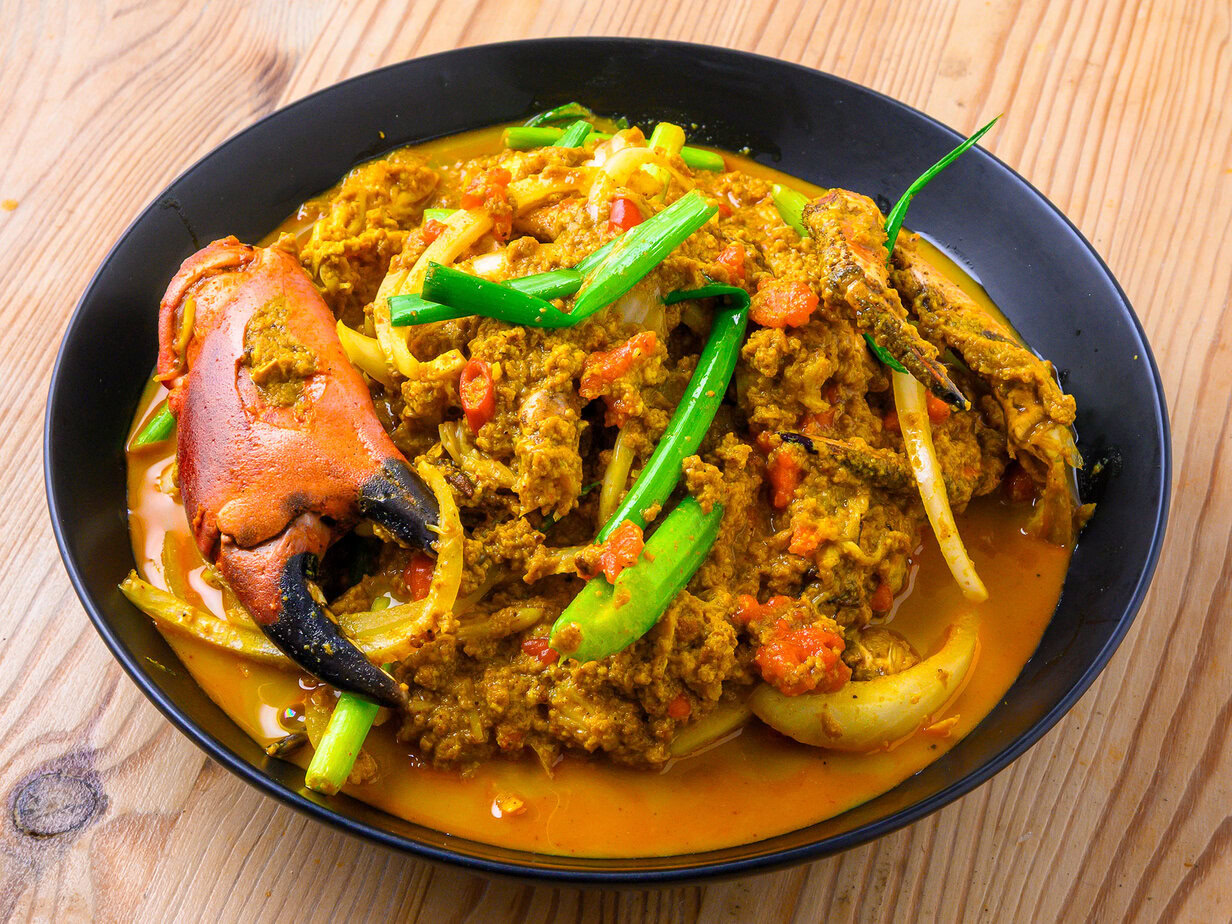
Ingredients
Main ingredients
- 1 whole crab cleaned; any variety (meat/roe/blue swimming crab)
- 0.5 onion thinly sliced lengthwise
- 2 small Thai red chiles sliced on the bias
- 3 stalks scallions cut into 5 cm pieces
- 2 stalks Chinese celery (kunchai) cut into 5 cm pieces
Seasoning Sauce
- 125 g powdered milk
- 3 tablespoons vegetable oil
- 1 tablespoon light soy sauce
- 1 teaspoon granulated sugar
- 4 tablespoons yellow curry powder
- 3 tablespoons Thai roasted chili paste (nam prik pao) including the oil from the jar
- 2 eggs
- ground white pepper to taste
Instructions
Preparation
- Clean the crab, scrub the shell, cut into serving pieces, and boil in vigorously boiling water for 10 minutes, until the shell turns orange, then drain.1 whole crab
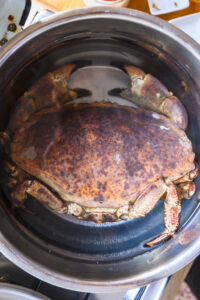
- In a bowl, beat the eggs with the light soy sauce, sugar, 1 tablespoon of yellow curry powder, white pepper, and roasted chili paste (nam prik pao) until smooth, then set aside.2 eggs, 1 tablespoon light soy sauce, 1 teaspoon granulated sugar, 4 tablespoons yellow curry powder, ground white pepper, 3 tablespoons Thai roasted chili paste (nam prik pao)
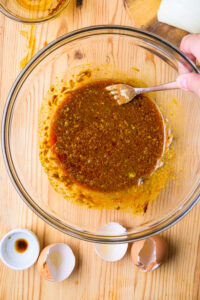
- Heat the oil in a wok over medium heat. Add the remaining yellow curry powder and stir-fry until fragrant, then gradually stir in the powdered milk to bloom the flavors.3 tablespoons vegetable oil, 125 g powdered milk
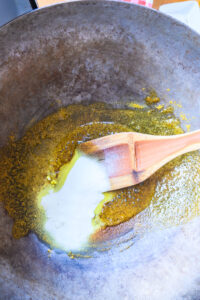
- Increase heat to high. Pour in the egg-curry mixture and stir until it thickens into a creamy sauce, then add the boiled crab pieces and toss to coat.
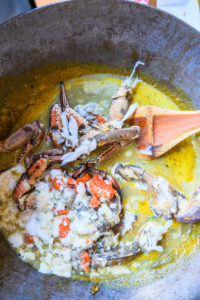
- Add the onion, Chinese celery, scallions, and red chiles; stir just until the vegetables are glossy but still crisp. Serve immediately with jasmine rice.0.5 onion, 2 stalks Chinese celery (kunchai), 3 stalks scallions, 2 small Thai red chiles

Notes
- Powdered milk combined with eggs creates the silky, custardy sauce that sets this dish apart from Indian or Malaysian crab curries.
- A splash of Shaoxing wine adds extra aroma, but it’s optional for home cooking.
Culinary Sources
- Thai Curry Crab: The Hidden Gem of Thai Cuisine – Hot Thai Kitchen (English)
- Thai Crab Curry Stir-Fry (pad pong karee) – Rachel Cooks Thai (English)
- Pad pong kari (stir-fry with curry powder) – Wikipedia (Thai)
- There Is No Such Thing as “Curry Powder” in India – BrandThink (Thai)
- How to Make Stir-Fried Crab with Curry Powder, Easy at Home | พ่อบ้านทำกินเอง – YouTube (Thai)
- Pad pong kari: The Story and Origin of an Intriguing Name… – Facebook (Thai)
- “Stir-Fried Crab with Curry Powder,” a Cyberworld Trend – MGR Online (Thai)
- A Dish a Week / “Kitchen Neighbor” / Stir-Fried Crab with Curry Powder – Matichon Weekly (Thai)
- Goong pad pong karee (shrimp with fried yellow curry powder) – Reddit (English)
- Many Ask the Admin: How Do You Say “Kaeng” in Chinese? A Trending Word in Thailand… – Facebook (Thai)
- File: Phunim phat pong kari.jpg – Wikimedia Commons (English)
